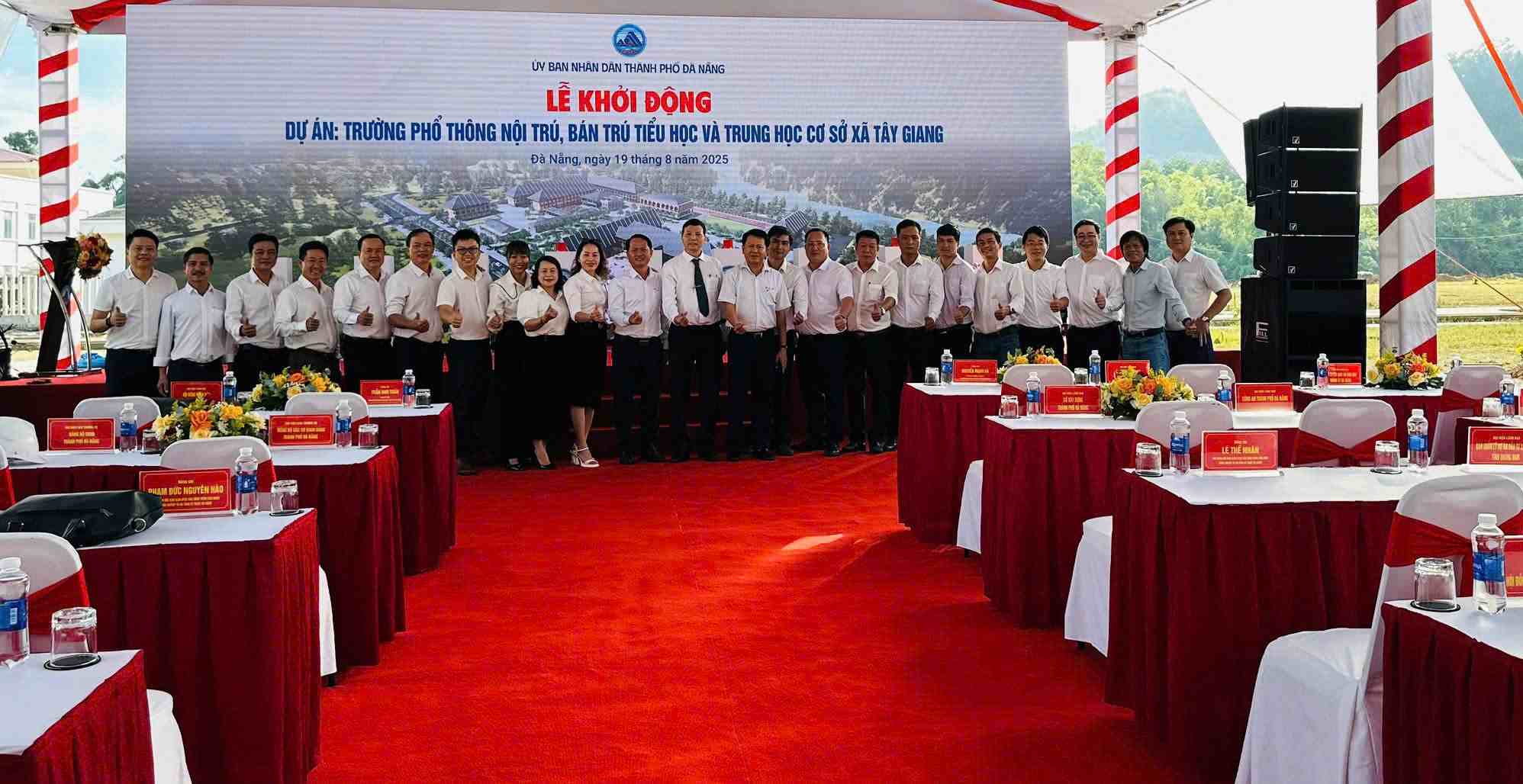The project has a total estimated cost of 262 billion VND, implemented according to the Politburo's policy on building schools for border communes.
The project investor is the Da Nang Civil, Industrial and Infrastructure Construction Investment Project Management Board. The project is expected to start construction in November 2025 and be completed in August 2026, in time to serve the 2026 - 2027 school year.

The project is built on an area of 4.1 hectares, with a scale of 1,000 students. The main items include: classrooms with 30 classes, 14 department rooms; administrative and management block; and living service block.
The living block has a kitchen, dining room, boarding area for students and a public house for teachers. In addition, the project also builds a multi-purpose house, sports field, cultural house, experience garden and other synchronous technical infrastructure.
This is a project of important political significance, aiming to develop the socio-economy, improve the knowledge and life of people in border areas, contributing to strengthening national defense and security.
Da Nang City has a policy of spending about 740 billion VND to invest in building a solid and modern system of ethnic boarding and semi-boarding schools in 6 land border communes, in order to thoroughly resolve the situation of degraded facilities and create fair learning conditions for students in mountainous areas.
These are projects considered urgent solutions for education in A Vuong, Tay Giang, Hung Son communes (formerly Tay Giang district, Quang Nam province) and 3 communes of Dac Pring, La De, La Ee (formerly Nam Giang district, Quang Nam province), which have just been merged into the administrative boundaries of Da Nang.
Currently, these communes have 20 schools at all levels, including 16 ethnic boarding schools and only 1 boarding school with 5,422 students, but most of them do not meet the minimum infrastructure standards. Most schools lack learning support rooms and auxiliary blocks. Technical infrastructure and teaching equipment are still lacking, the terrain is difficult, the roads are remote, and landslides are frequent during the rainy season, making it extremely difficult and dangerous for students to go to school. Many teachers have to carry students across the stream, while degraded facilities always pose a potential risk of insecurity...












